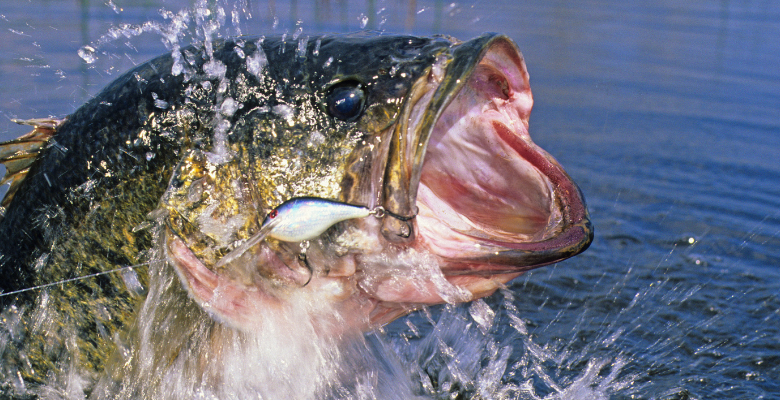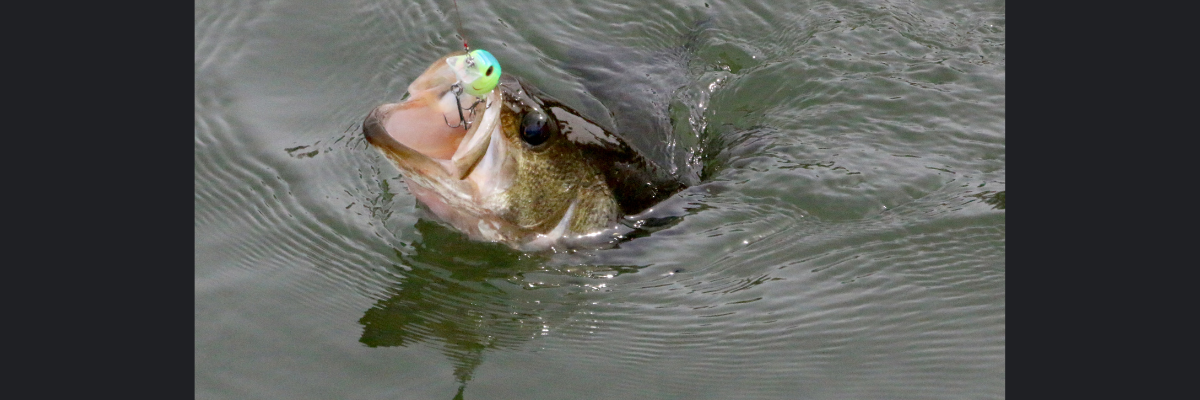Jerkbait vs Crankbait: Complete Guide to Throwing These Baits

Enter any fishing store and you will find a wide variety of artificial baits. Jerkbaits, crankbaits, swimbaits, spinners, worms, and more.
Among all these, jerkbaits and crankbaits are two popular options with very different applications and presentations. Your success with these baits depends on knowing when and where to use them. For that, it’s necessary to know the similarities and differences between them.
So let’s get to work with this jerkbait vs crankbait comparison.
What is a Jerkbait?
A jerkbait is a hard-body lure made with a long and slender shape. The common material used is plastic, but metal, wood, and polymer options are also available. Most jerkbaits have a short bill that determines the movement and also their diving depth.
The two main types of jerkbaits are hard and soft jerkbaits. The soft ones are made from soft plastic, whereas the hard ones are made from hard plastic or wood.
With numerous jerkbait designs, it is difficult to pinpoint their default action in the water. Each type has distinctive traits that work best in specific conditions.
Types of Jerkbaits
Let’s take a more in-depth look at the different types of jerkbaits.
Soft Jerkbaits
Soft jerkbaits are best used in shallow areas covered with thick floating vegetation. The weedless rigging prevents them from getting caught in the vegetation. Fish are more likely to hold on to these baits, but aggressive biting can damage them quickly.
Hard Jerkbaits
Hard jerkbaits come in three different buoyancy styles. If you are targeting fish that are hitting topwater, floating jerkbaits are a good option. They will easily float over grass and other aquatic plants. However, the chances of these baits getting caught in vegetation are high due to the exposed hooks.
Suspended Jerkbaits
Suspended jerkbaits are more common as they can be placed at variable depths. These baits will sink to a specific height and then stay at that level or rise very slowly. That enables you to keep the bait in the strike zone for longer periods.
When the fish are hiding in deep cover, sinking jerkbaits are great choices. However, if you don’t know the depth of the water, these baits can be tricky to use.

What is a Crankbait?
Compared to jerkbaits, crankbaits have a rounder cross section and are shorter in length. They usually have two treble hooks attached to their body.
Crankbaits come in different bill sizes and shapes and can be used in varying depths. Just like jerkbaits, they are commonly made of plastic, polymer, wood, or metal.
Since crankbaits have larger lips they can be used in deeper waters. That makes them a more versatile choice for lakes as well as oceans at depths between 5-25 feet. Technically, crankbaits are easier to use. Simply throw the bait out and reel back at a consistent rate.
Types of Crankbaits
The three main body styles for crankbaits are hard, soft, and lipless. Hard crankbaits are the most common choice for deeper waters and they mimic baitfish well. The soft ones have a similar action but the fish will hold on to them longer.
In general, the longer the lip size of the crankbait, the deeper it will sink. Lipless options are great for fishing near the surface, especially in shallow waters. They come in a variety of colors that resemble baitfish and generate a lot of vibration.
These crankbaits have hollow chambers that contain bearings that make a rattling sound. Since fish have well-developed sensory mechanisms to detect motion, noise, color, and scent, sound attracts them.

Jerkbait vs Crankbait Action
The name jerkbait arises from the erratic movement of the bait that mimics the movements of a dying baitfish. Its slender, elongated shape makes a big difference in the movement of a jerkbait.
Note, that the bait will not move on its own and depends on the angler’s handling of the fishing rod. That means you must constantly jerk the rod to help the bait move around. I remember using a jerkbait for the first time while fishing for smallmouth on a lake. What impressed me most was the bait’s ability to pause in mid-retrieve.
I have used the twitch-pause retrieve with a soft jerkbait and a Texas rig in post-spawn areas where the bass is recovering. A shad-colored bait is an excellent choice in such conditions.
When you retrieve a crankbait, the water runs over the lip and makes the bait wobble on its axis. This mimics the movement of the baitfish.
However, unlike the zig-zag movements of a jerkbait, the swimming action is more consistent. You need not apply a constant force on the rod to keep the bait moving.
Jerkbait vs Crankbait: Bill Types
A typical jerkbait has a stubby bill that helps in-depth control. These bills can be round, square, or diamond-shaped. There are lipless jerkbaits as well.
Short-billed jerkbaits have been a staple choice as they can be easily cast. However, anglers are also choosing long-bill options to reach bass that tend to stay deep, especially during the cold water period.
For crankbaits, the bills are more pronounced and the round bill is the most common type. The wider the bill the more wobble action the bait generates. The thinner the bill the more compact the wobble.
Square-shaped bills can easily get through underwater structures like docks and rock piles. They are best used in depths less than eight feet without any risk of getting hung up. Crankbait bills can also be shaped like a diamond or a hexagon. This shape allows them to move deeper as well as the ability to get through structures.
Lipless crankbaits can hover in the same depth for longer hours. You can also make it sink and use it at varying depths. The versatility of the bait makes it a must-have in your tackle box all around the year.
It took me some time to accurately mimic the baitfish with a lipless crankbait. During winter and pre-spawn, when the water temperatures are on the colder side, this bait can be an absolute killer. They can also be effective while ice fishing for walleye.
Jerkbait vs Crankbait Retrieval Types
It’s the snap-pause retrieve that makes a jerkbait start its enticing baitfish dance and drive the bass wild. A jerkbait can attract fish by a straight retrieve too by swimming in a shimmying motion. Since these are visual baits, they are best for use in open and shallow water.
I use the simple technique of casting a jerkbait in open water pockets and giving it a few sharp twitches. Then, I allow the bait to drop and lay still. In case the water is cold, I lengthen the pause. Longer pauses of around 20 seconds during late winter or early spring, tend to attract strikes from monster bass.
As the water temperature rises through spring, the action gets faster. You can think of giving the line some slack and then a few fast twitches. This increases the erratic movements of the jerkbait and works great in areas of smallmouth action. Keeping the line tight will not generate the same effect.
Likewise, there are multiple ways to work a crankbait. A big plus of using this bait is, you can vary the retrieval speed to attract both aggressive and inactive bass. Again, water temperature and water clarity play a big role in determining the retrieval method.
When the bass aren’t aggressive, keep the bait in the strike zone for longer periods and use a slow retrieve. Make sure to choose the right gear ratio to set the pace. Using a high-speed reel with gear ratios of 7.5:1 will be too fast to attract bites. I have found a 5.4:1 gear ratio to be a better choice for heavy cranking.
Some anglers also use a stop-and-go technique where they stop the reel for a second after every 3-4 turns of the handle.
Each stop allows the crankbait to sink a few inches which imitates an injured baitfish. A retrieve with sporadic jerks also works great during fall when the bass are after pods of shad.
If you’re struggling, chances are, the bass have seen thousands of baits throughout the year and are adapting to the tactics being used. You need to make bait stand out to attract attention.
Vary the retrieving techniques to find out what works for this group of fish.
Crankbait vs Jerkbait vs Stick Bait
Stickbaits are hard plastic or wooden baits that have a streamlined shape, tapering towards the tail. This shape makes them distinctly different from crankbaits. Just like jerkbaits, they imitate an injured baitfish while moving through the water. But these baits do not have a bill or lip. They come in varying lengths and the large ones can be around 10 inches in length.
Depending on the design, stickbaits can be floating, slow sinking, or fast sinking. While they are plain in shape, stickbaits compensate with their bright and striking finishes. Being heavier, stickbaits are ideal for long throws and work well in choppy waters.
Unlike jerkbaits and crankbaits, a typical stickbait has no built-in action. They may have skirts, blades, or bibs that make them minnow imitators. That said, some manufacturers are designing stickbaits that have some side-to-side motion.
Final Thoughts
Understanding the difference between jerkbait and crankbait will help you pick one over the other. Both types are effective in a wide range of situations.
In general, jerkbaits work best in shallow ponds and creeks whereas crankbaits are ideal for deeper waters. However, you need to consider the water temperature, visibility, and fish type as well.
No matter what you have learned from this jerkbait vs crankbait comparison, I’d suggest picking both types from the tackle store. Combining them to meet different situations will give you the best results.




One Comment